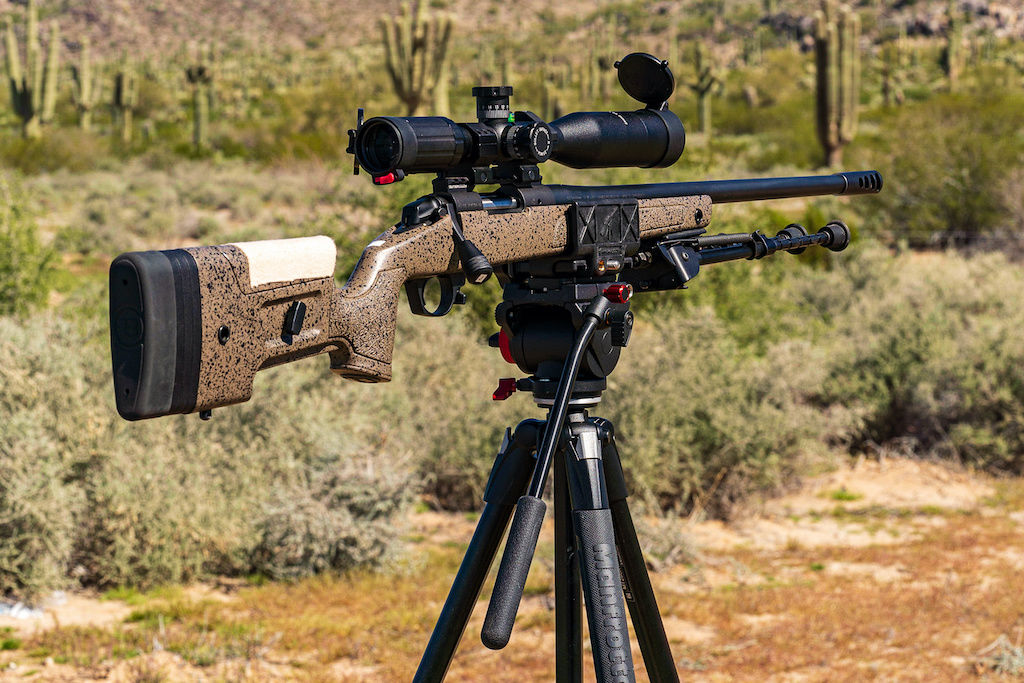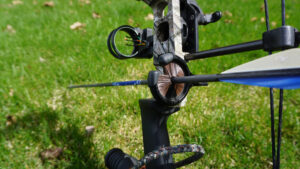Garmin Livescope is a revolutionary technology that has transformed ice fishing. It allows anglers to see underwater imagery in real-time, giving them a clear view of the fish and their surroundings. However, to get the most out of this incredible tool, it is crucial to understand how to optimize its settings for different ice fishing conditions.
In this article, we will explore the key features of Garmin Livescope and delve into the importance of correct settings. We will also discuss the initial setup process and calibration for ice fishing.
Additionally, we will provide you with optimal settings for different ice fishing conditions and guide you on troubleshooting common issues that may arise. Lastly, we will give you some tips on how to maintain your Garmin Livescope to ensure it continues to deliver exceptional performance.
Understanding Garmin Livescope for Ice Fishing
Before we dive into the nitty-gritty of setting up and optimizing your Garmin Livescope, let’s take a moment to understand this innovative technology. Garmin Livescope is a cutting-edge fishfinder system that uses sonar signals to create detailed, real-time images of the underwater world. By connecting the Livescope transducer to a compatible Garmin display, anglers can visualize fish movements, structures, and even bait presentations with remarkable clarity. This game-changing technology revolutionizes the way ice fishing is approached, allowing anglers to make more informed decisions and improve their chances of success on the ice.
Ice fishing is a popular winter activity that requires patience, skill, and the right equipment. Traditionally, anglers would rely on their instincts and experience to locate fish beneath the frozen surface. However, with the introduction of Garmin Livescope, ice fishing has been taken to a whole new level. This advanced fishfinder system provides anglers with a window into the underwater world, enabling them to see what lies beneath the ice and make strategic decisions based on real-time information.
Key Features of Garmin Livescope
Garmin Livescope boasts several impressive features that contribute to its unparalleled performance. One of its key features is the Panoptix LiveScope mode, which provides a real-time, forward-looking sonar view that enables anglers to see fish swimming in front of the transducer. This mode allows anglers to track the movement of fish and adjust their fishing techniques accordingly. Whether it’s a school of perch or a solitary walleye, Livescope ensures that you never miss an opportunity.
Additionally, Livescope offers an adjustable range feature that allows anglers to customize the distance they want to examine. This flexibility is particularly useful when fishing in different depths or when targeting specific species that prefer certain water depths. By adjusting the range, anglers can focus their attention on the areas where fish are most likely to be found, increasing their chances of a successful catch.
Another fantastic feature is the color-coded depth range, which helps anglers differentiate between different depths and identify potential fishing hotspots. This feature allows anglers to quickly identify areas where fish are likely to congregate, such as drop-offs, weed beds, or submerged structures. By understanding the underwater topography, anglers can strategically position themselves and increase their chances of hooking a trophy fish.
Lastly, Livescope supports both traditional 2D sonar and LiveScope modes, giving you the flexibility to choose the display that suits your preferences and fishing style. The traditional 2D sonar provides a familiar view of the underwater world, while the LiveScope mode offers a more detailed and dynamic perspective. Whether you prefer a traditional approach or want to take advantage of the latest technology, Garmin Livescope has you covered.
Importance of Correct Settings
Having access to the best settings for your Garmin Livescope is crucial for maximizing its efficiency on the ice. By fine-tuning the settings according to the specific ice fishing conditions, you can enhance the clarity of the images and target fish with greater precision. Incorrect settings can result in distorted images, interference, or missed opportunities. With the correct settings, you can unlock the full potential of your Garmin Livescope and gain a significant advantage on the ice.
Setting up your Garmin Livescope requires attention to detail and an understanding of the different parameters that can be adjusted. Factors such as water temperature, depth, and clarity can affect the performance of your fishfinder system. By calibrating the settings to match the current conditions, you can ensure that you are getting the most accurate and reliable information from your Livescope.
One of the first settings to consider is the sensitivity level. This setting determines how sensitive the sonar is to detecting fish and underwater structures. In clear water with minimal interference, a higher sensitivity level can help you spot even the most subtle movements. However, in murky water or areas with a lot of debris, lowering the sensitivity can reduce false readings and provide a clearer image.
Another important setting is the frequency selection. Garmin Livescope offers multiple frequency options, each with its own advantages. Higher frequencies, such as 200 kHz, provide greater detail and resolution, making it easier to identify individual fish and structures. On the other hand, lower frequencies, such as 50 kHz, have a wider coverage area and are better suited for detecting larger fish or schools of fish.
Furthermore, adjusting the depth range can significantly impact your fishing success. By setting the depth range to match the water depth you are fishing in, you can focus on the areas where fish are most likely to be present. For example, if you are targeting walleye in shallow waters, setting the depth range to 10-20 feet can help you narrow down your search and increase your chances of finding the fish.
Lastly, don’t forget to experiment with the different display options available on your Garmin Livescope. The color palettes, brightness, and contrast settings can all be adjusted to optimize the visibility of the images. What works best in one fishing spot may not be ideal in another, so don’t be afraid to make adjustments until you find the perfect combination.
By taking the time to understand and fine-tune the settings of your Garmin Livescope, you can unlock its full potential and gain a significant advantage on the ice. With the ability to see fish movements, structures, and bait presentations in real-time, you can make more informed decisions and increase your chances of a successful ice fishing trip.
Setting Up Your Garmin Livescope for Ice Fishing
Setting up your Garmin Livescope correctly is vital to ensure accurate readings and optimal performance. Let’s walk through the initial setup process and calibration for ice fishing to get your Livescope up and running smoothly.
Initial Setup Process
When you first acquire your Garmin Livescope, it is essential to follow the initial setup process diligently. Start by mounting the transducer securely to your ice fishing setup. You can attach it to your auger, tripod, or any other stable platform that provides a clear view of the water. Connect the transducer cable to your Garmin display and make sure all connections are tight and secure. Once everything is set up correctly, turn on your Garmin display and ensure that the transducer is functioning correctly. Following these steps will lay the foundation for a successful ice fishing experience with Garmin Livescope.
Calibration for Ice Fishing
Now that your Livescope is set up, it is time to calibrate it specifically for ice fishing conditions. Calibration becomes necessary because the sonar waves behave differently in ice compared to open water. Begin by selecting the calibration option on your Garmin display. Follow the on-screen instructions to complete the calibration process. It usually involves identifying a known distance and adjusting the settings accordingly. Calibration ensures that your Livescope accurately interprets the sonar signals and gives you reliable readings. Neglecting this step can lead to inaccurate information and compromised performance.
Optimal Settings for Different Ice Fishing Conditions
Now that we have covered the setup and calibration process, let’s explore the optimal settings for different ice fishing conditions. Fine-tuning your Livescope settings is crucial for maximizing its potential and adapting to various environments.
Settings for Clear Ice Conditions
When fishing on clear ice, it is recommended to adjust the gain setting to a moderate level. This will help eliminate excessive background noise and provide a clearer image of fish and structures. Additionally, increasing the sensitivity setting can enhance the detection of small and subtle movements. Experiment with these settings to find the ideal combination that works best for you.
Adjustments for Snowy or Slushy Ice
Fishing on snowy or slushy ice requires some adjustments to ensure optimal performance. First, consider increasing the gain setting to counter the increased interference caused by the snow or slush. However, be cautious not to set the gain too high, as it can result in false readings or cluttered images. Similarly, adjusting the sensitivity setting to a slightly higher level can help detect fish movements through the layers of snow or slush. Keep experimenting with the settings until you find the perfect balance for fishing in these conditions.
Troubleshooting Common Issues
Despite its advanced technology, Garmin Livescope may encounter occasional issues that can hamper your fishing experience. Let’s explore some common problems that anglers may face and the corresponding solutions.
Dealing with Interference
Interference from external sources can sometimes disrupt the performance of your Livescope. To minimize interference, avoid placing any electronic devices near the transducer or power cables. Additionally, ensure that your transducer cable is free from any kinks or damage that could affect the signal quality. If interference persists, consider changing the frequency of your Garmin Livescope to find a channel with less interference. These measures will help optimize your Livescope’s performance, providing you with clear and accurate readings.
Improving Image Clarity
If you notice a decrease in image clarity, there are a few steps you can take to enhance it. Start by adjusting the gain and sensitivity settings to find the optimal balance for the specific fishing conditions. Additionally, clean the transducer and ensure that it is free from any debris or obstructions that could affect the sonar signals. Regularly wiping the transducer with a soft cloth and inspecting it for any damage will go a long way in maintaining excellent image quality.
Maintaining Your Garmin Livescope for Ice Fishing
Lastly, let’s discuss essential maintenance tips to keep your Garmin Livescope in top-notch condition throughout the ice fishing season.
Regular Updates and Upgrades
Garmine regularly releases software updates and firmware upgrades for their devices. Make sure to stay up-to-date by checking for these updates periodically. These updates often include enhancements to performance, bug fixes, and new features, ensuring that your Livescope continues to deliver the best possible user experience.
Cleaning and Storage Tips
Proper cleaning and storage are vital to prolonging the lifespan of your Garmin Livescope. After each fishing trip, wipe down the transducer and display with a damp cloth to remove any dirt or residue. Avoid using harsh chemicals or abrasive materials that could damage the delicate components. When storing your Livescope during the offseason, ensure it is in a dry and temperature-controlled environment. Protecting it from extreme temperatures and moisture will prevent any potential damage and extend its longevity.
By following these maintenance tips, you can enjoy seamless performance from your Garmin Livescope year after year, ensuring that it remains a valuable asset on your ice fishing adventures.
In conclusion, discovering the best settings for your Garmin Livescope is essential for optimizing its performance and enhancing your ice fishing experience. By understanding the key features, setting up correctly, and calibrating for ice fishing, you can unlock the full potential of this incredible tool. Furthermore, fine-tuning the settings according to different ice fishing conditions and troubleshooting common issues will ensure that you make the most of your Livescope on the ice. Lastly, taking care of your Livescope through regular updates, cleaning, and proper storage will contribute to its longevity and reliability. So get ready to revolutionize your ice fishing experience with Garmin Livescope and its best settings!


